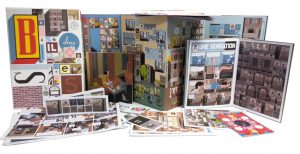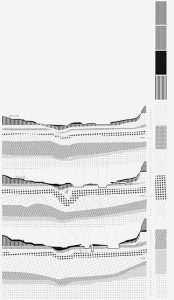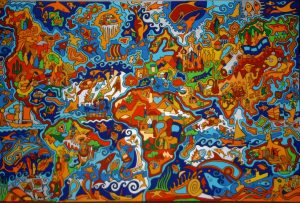
Chris Ware’s ‘Building Stories‘ (2012) consists of fourteen “easily misplaced elements;” printed works that range in format from board game to booklet to broadsheet. These fourteen texts can be pieced together to reveal a number of simultaneous yet disparate personal narratives of residents in a three-story brownstone in Chicago. The protagonist is an art school graduate with a prosthetic leg, who experiences years that oscillate between periods of creative unfulfillment, pest infestation (the bees get their own storyline), mourning, and maternal responsibilities.
Ware leaves the reader responsible to piece together his narratives for themselves, which creates an experience that is just as alienating as it is provocative. No one document contains its own complete narrative, and thus the reading of ‘Building Stories’ is by necessity an intertextual one. Despite the autonomy given to the reader, I couldn’t help but feel a frustration, or a “fear of missing out” on the many narratives embedded within the set.
The piece is also noteworthy in its privileging of spatial and environmental design over more accessible techniques of illustration. In his NYT review, Douglas Wolk remarks that, “The organizing principle of ‘Building Stories’ is architecture, and — even more than he usually does — Ware renders places and events alike as architectural diagrams. He’s certain of every detail of these rooms, and tends to splay their furnishings out diagonally to show how they fit together.”
Further, this work can be linked to discussions of mapping processes in our class through a passage within James Corner’s “The Agency of Mapping…,” in which he lists the “Game-board” as a “thematic development of mapping in contemporary design practice […] conceived as shared working surfaces upon which various competing constituencies are invited to meet to work out their differences” (Corner 96).
In short, the work is a great example of how different narratives can co-exist in a variety of formats and media while still maintaining a cohesive message greater than the sum of its parts.
 Follow
Follow


